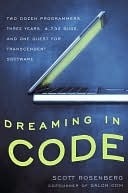More on this book
Community
Kindle Notes & Highlights
Read between
December 13 - December 17, 2022
Software errors cost the U.S. economy about $59.5 billion annually, according to a 2002 study by the National Institute of Standards and Technology, as two out of three projects came in significantly late or over budget or had to be canceled outright.
Their work is one percent inspiration, the rest sweat-drenched detective work; their products are never finished or perfect, just varying degrees of “less broken.”
“The total cost of maintaining a widely used program is typically 40 percent or more of the cost of developing it. Surprisingly this cost is strongly affected by the number of users. More users find more bugs.”
“The hard thing about building software is deciding what to say, not saying it.”
“A baseball manager recognizes a nonphysical talent, hustle, as an essential gift of great players and great teams. It is the characteristic of running faster than necessary, moving sooner than necessary, trying harder than necessary. It is essential for great programming teams, too.”
A hyper-active imagination for disaster scenarios is a professional asset; they have to think through everything that can go wrong in order to practice their craft. If you want to change the world, the Italian radical Antonio Gramsci famously declared, you need “pessimism of the intellect, optimism of the will.”
In any project that is introducing a new technology or design, Frederick Brooks had advised, “plan to throw one away,” because you almost certainly won’t get it right the first time. All you can control is whether you actually plan to get it wrong, or rashly “promise to deliver a throwaway to customers.”


